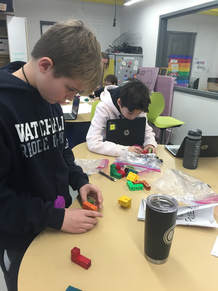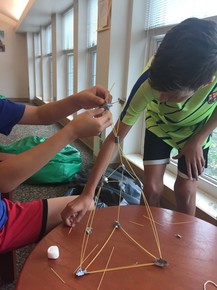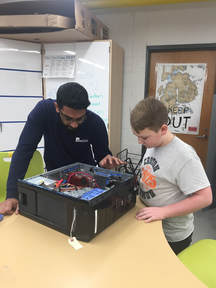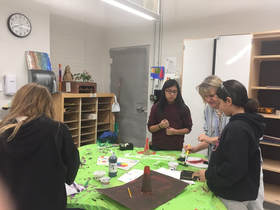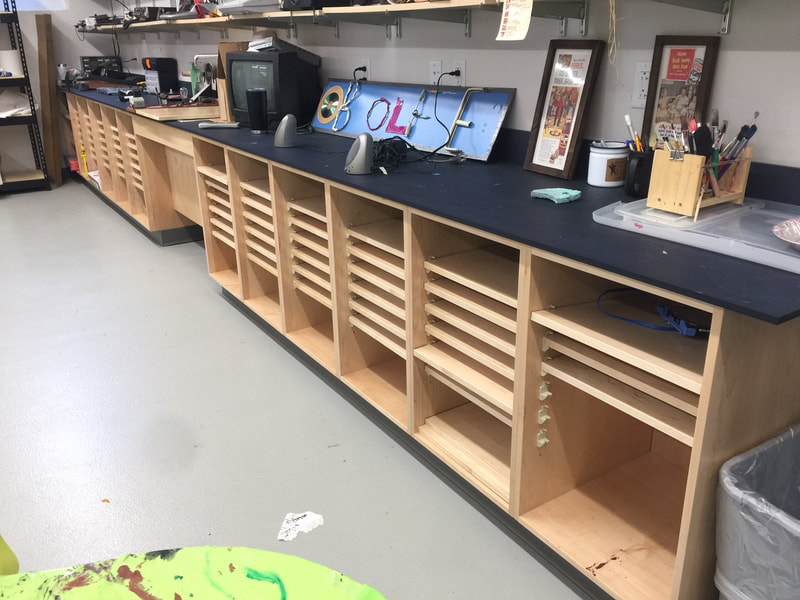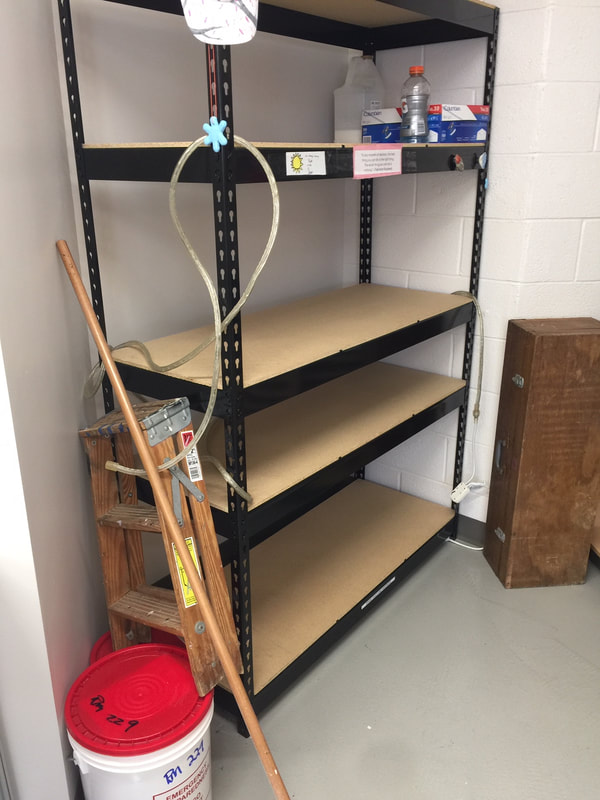PVC INNOVATION DESIGN LAB (INDE LAB)
It is clear to all that education practices are changing to meet the needs of students who are living in a world that is quite different than the one we grew up in. One way PVC meet those needs is the innovation and design lab, now in its fourth year.
The current program has 3 components:
The skills students use in the lab are an enhancement to other classes in that they are hands on and open ended. Direct and indirect learning takes place as students develop the habits of mind that all graduates of Croton Harmon should attain. (See Profile of a Graduate). Because of the creative and sustainable nature of the lab, most materials come from generous donations by the community. This includes large and costly items such as the new 3D printers to free recyclable items such as cleaned out yogurt containers.
Please help the InDe Lab stay stocked. Our current wish list includes, but is NOT limited to:
If finding and donating repurposable items is not your thing, you can also help out by volunteering. There are 3 ways you can make our children’s experience at PVC richer:
The current program has 3 components:
- The First component is to work with classroom teachers to develop projects that will enhance understanding of the content that is being studied. For example, the 6th graders are completing a study of natural disasters. In order to gain a better understanding of the impacts these disasters have on humans, the students were charged with designing and inventing something that would help survivors move on with life or to warn people of an impending disaster. Other current projects include: the 7th graders have just completed making puzzles and are beginning a study of water scarcity, the 8th graders are learning about the engineering principles and aesthetics of bridge building and the 5th graders have all now practiced using basic tools such as utility knives and glue guns to create mini sculptures.
- A Second component allows students to create their own projects during recess time. These projects range from building minicomputers to making costumes to building bookshelves. There is a current rush for holiday inventions such as lamps and tree top ornaments.
- The Third component is an introduction to computer programming.
The skills students use in the lab are an enhancement to other classes in that they are hands on and open ended. Direct and indirect learning takes place as students develop the habits of mind that all graduates of Croton Harmon should attain. (See Profile of a Graduate). Because of the creative and sustainable nature of the lab, most materials come from generous donations by the community. This includes large and costly items such as the new 3D printers to free recyclable items such as cleaned out yogurt containers.
Please help the InDe Lab stay stocked. Our current wish list includes, but is NOT limited to:
- Obsolete items - these can be electronic in nature, but things like the slide ruler are stumping kids. (we have a great display that makes students wonder what life was like before cell phones. Please stop by for a trip down memory lane)
- Old electronics - Especially computers, Desktops and Laptops (there are lots of programs available on-line to help you erase information on your hard drive).
- Small yogurt cups, Egg Crates, Clean containers (Clear plastic or cardboard).
- Large pieces of flat cardboard or interesting shaped boxes
- Foamboard, Plywood, Cardboard, plastic sheathing
- Old bookshelves and other salvageable furniture items
- Casters, wheels, gears, pulleys, belts, springs, metal rods, rubber gaskets, etc
- Hand tools
- Small metal dowels
- Interesting tape designs
- Old toys that are no longer working
- Ball bearings
- Tubes of any material or width
- Anything that could be repurposed, especially if there are multiples. (You’d be amazed at what these kids can do. I am inspired daily!)
- Hinges of different sizes and materials, nuts and bolts
- Items to join different objects together
- Old Flat screen TVs that can be used as monitors
If finding and donating repurposable items is not your thing, you can also help out by volunteering. There are 3 ways you can make our children’s experience at PVC richer:
- Volunteer to help out during the 5th and 6th grade recess. (M-W 11:00 - 12:00) You will make an immediate impact on the students by helping them bring their best selves to their projects.
- Come Friday afternoons to help reorganize.
- Teach a skill at the weekly InDe club. This is an incredible chance for students to learn different skills from experts in the field. We have had someone from Jacob Burns to teach about film-making and photography, The Director of Croton Free Library to teach about 3D printing, the school district’s webmaster to help the kids create their own “websites”. We’ve learned about GarageBand, tool usage, electronics all from experts. The children are currently learning how to use Arduinos to write simple code from someone at Google. The club meets on Wednesday mornings at 7:15, so you can probably even get to work on time.
7th graders will have introduction to Innovation and Design 2 times a week for one trimester. Here students designed then tested wooden puzzles
Children are presented with many STEAM challenges that require, teamwork, grit, applying previously learned skills and theories. Many projects are done cooperatively as that is what business people say is missing in new graduates.
Taking apart different electronics is a great way for students to learn how things work. Alen is our district technologist who took a couple minutes to help student better understand this hard drive. We are truly a community effort.
In addition to taking computers apart, they are also put back together. We would love an old, large screen TV to use as a monitor.
Mr. Ranieri works on algebra, while 6th grade students work independently in the “Tool/Work” room.
In the Inde Club students learn to use different types of tools correctly. Everyone thinks they know how to use a hammer, but actually, if it used correctly, the work is much easier. Tools include high tech, like the Arduino computers, and low tech.
Some ways to paint are much more Basic lessons like this take place all day long in addition to enhancing understanding of content.
This “house” was designed by 6th graders studying the effects of natural disasters on humans. While the weather is good, the house stays on the ground. But as hurricanes begin to flood the area, hydraulics will lift the house. (it really goes up and down) You’d be amazed at how much engineering was learned, and how many questions were raised by building this model.
Thank you in advance for your valuable support! Please contact us with any questions or suggestions. We'd love to hear from you!
– Katie Brennan and the PVC PTA.
– Katie Brennan and the PVC PTA.
